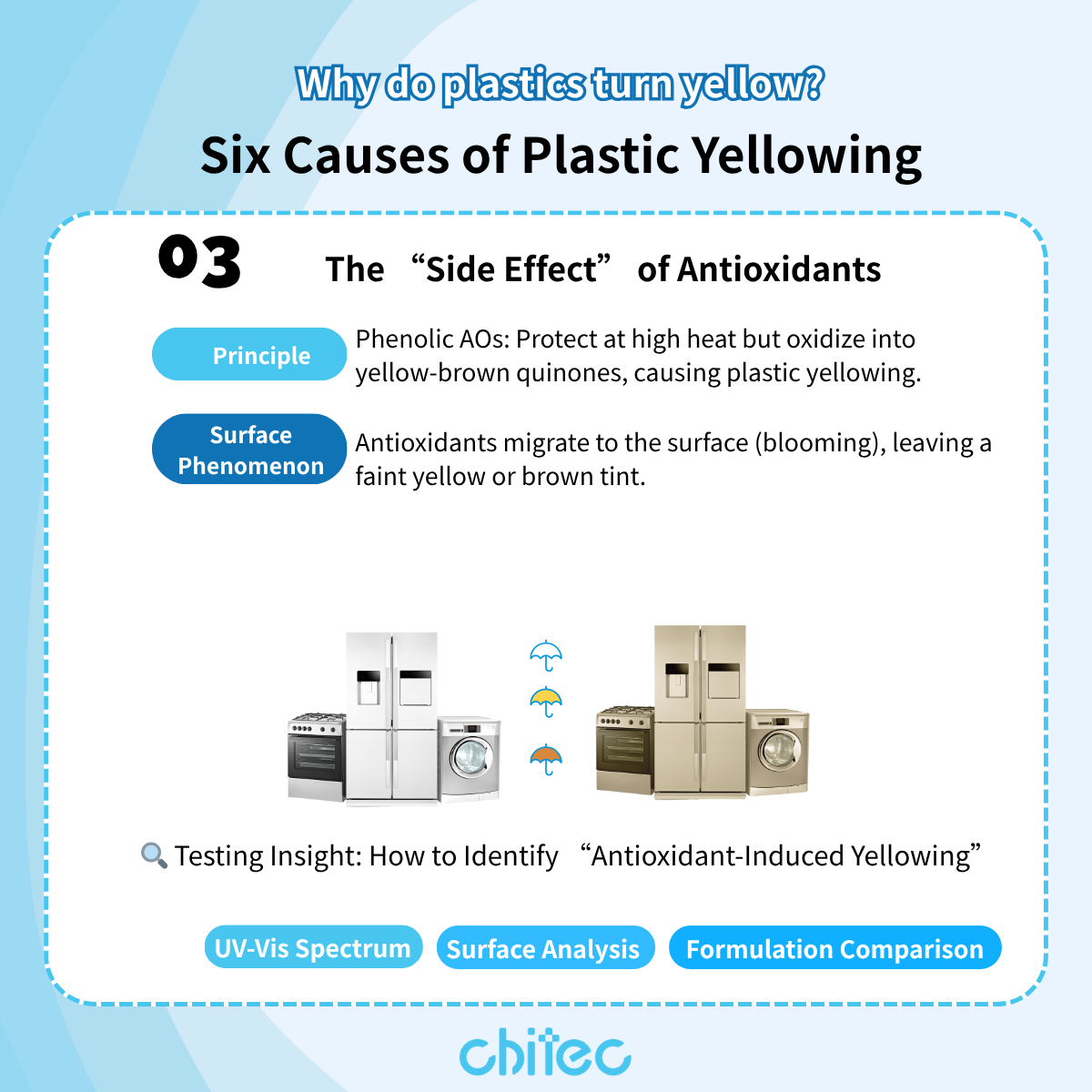📘 “Six Causes of Plastic Yellowing”
Part 3: The “Side Effect” of Antioxidants

🌡 Side Effects of Phenolic Antioxidants
During plastic processing, phenolic antioxidants (phenolic AO) are often added to inhibit free radical reactions at high temperatures, acting like a “protective umbrella” for the material.
However, under prolonged oxidation or high-temperature conditions, these phenolic structures can transform into quinones—a type of chemical compound whose natural color is yellow or brown. As a result, the very additives intended to protect the material can ironically become the culprit behind plastic yellowing.
• Migration and Surface Discoloration
Some antioxidants or compatibilizers can migrate to the material surface during use, a phenomenon known as blooming. When these molecules accumulate on the surface, they often appear yellowish or brownish—like a stain that cannot be wiped off—though it’s actually the visible mark of a chemical reaction.
Common Materials and Scenarios
• White PP / PE products: Such as appliance housings or household storage boxes, which often turn from bright white to slightly yellow as phenolic antioxidants degrade.
• Transparent PC / PMMA: Even slight color shifts can drastically affect appearance, making the product look “old” or “dirty.”
• Engineering plastics: When traditional AOs are used, long-term exposure to high-temperature environments makes discoloration particularly noticeable.
🔍 Testing Insight: How to Identify “Antioxidant-Induced Yellowing”
In laboratories, engineers use several analytical techniques to determine whether the yellowing originates from antioxidants:
- UV-Vis absorption spectrum: Detects characteristic peaks of quinone-type compounds; color shifts often correspond to these by-products.
- Surface analysis (e.g., FTIR-ATR): If blooming occurs, AO-specific peaks will appear prominently on the surface spectra.
- Formulation comparison: Replacing with low-color or non-phenolic AOs—if yellowing improves, it confirms antioxidants as the cause.
📘 There are still 3 more articles in this “Plastic Aging Mechanism” series, helping you fully understand the chemistry behind yellowing, embrittlement, and gloss loss.
Read more –
Six Causes of Plastic Yellowing Part 1: Photo-oxidation
Six Causes of Plastic Yellowing Part 2: Thermal Oxidation
The Science of Stability: How UV Absorbers Extend Material Performance
🔹Chitec Technology | The Expert in Anti-Aging Solutions for Materials

建議您使用以下瀏覽器觀看本網站,
要下載瀏覽器,請直接點擊以下:以獲得最佳瀏覽效果。